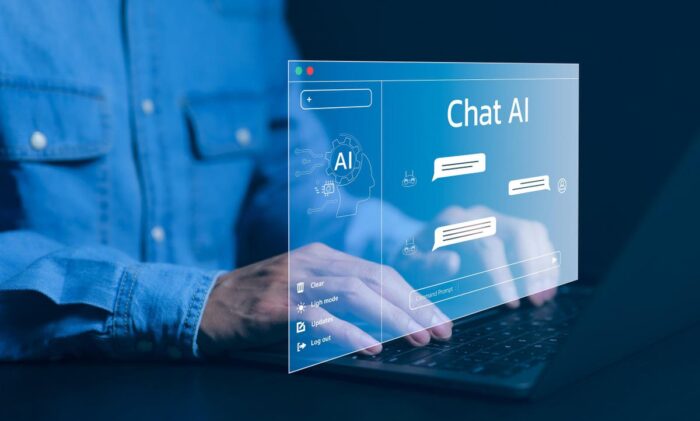Software development has come a long way since its inception, evolving with advancements in technology and shaping the modern digital landscape. In recent years, the emergence of artificial intelligence (AI) has revolutionized the software development process, offering new possibilities and transforming the way applications are built. In this blog, we will explore the fascinating world of software development using AI, its benefits, and its impact on the industry.
Short History of Software Development

Source: forbes.com
The history of software development dates back to the early days of computing. Let’s take a brief journey through the significant milestones:
The Birth of Computing
The origins of software development can be traced back to the development of early computing machines. In the 1940s and 1950s, computers were massive machines that required manual programming using punch cards or machine language.
Assembly Language
In the 1950s, assembly language was introduced as a way to write code that was closer to the machine’s native instructions. It made programming slightly more accessible and allowed for faster development.
High-Level Programming Languages
The 1950s and 1960s saw the emergence of high-level programming languages such as Fortran, COBOL, and LISP. These languages introduced more abstraction and made programming more user-friendly, allowing developers to write code using familiar syntax and logical constructs.
Software Engineering Discipline

Source: theladders.com
In the late 1960s, the field of software engineering began to take shape. Software development methodologies such as the Waterfall model and structured programming were introduced to manage large-scale projects more effectively.
Object-Oriented Programming (OOP)
In the 1980s, object-oriented programming gained popularity. OOP languages like C++ and Java allowed developers to organize code into reusable objects, promoting modularity and code reusability.
Rapid Development and Agile
The late 1990s and early 2000s brought about a shift towards rapid development methodologies. Agile methodologies like Scrum and Kanban emphasized iterative and collaborative approaches, focusing on delivering working software in shorter cycles.
Rise of Web and Mobile Applications

Source: e-spincorp.com
With the widespread adoption of the internet and mobile devices, web and mobile application development became crucial. Frameworks and tools like HTML, CSS, JavaScript, and mobile app development platforms made it easier to create user-friendly and interactive applications.
Cloud Computing and Software as a Service (SaaS)
The advent of cloud computing introduced new possibilities for software development. With cloud-based infrastructure and platforms, developers could build scalable applications and offer them as services over the Internet. To gain expertise in harnessing the power of cloud computing, consider enrolling in Cloud Computing Courses of Intellipaat.
Artificial Intelligence and Machine Learning
In recent years, the integration of AI and machine learning into software development has unlocked new opportunities. AI algorithms can automate tasks, analyze data, and make intelligent predictions, enhancing the capabilities of software applications.
As technology continues to evolve, software development will continue to advance, enabling developers to build more sophisticated and intelligent applications. The history of software development is a testament to the progress made in the field, and it sets the stage for an exciting future of innovation and creativity.
Issues of Traditional Software Development

Source: morrisonsislandcampus.ie
While traditional software development methods have served their purpose, they often come with several challenges that can impede progress and hinder innovation. Here are seven common issues associated with traditional software development:
Lengthy Development Cycles: Traditional software development involves writing lines of code from scratch, leading to long development cycles that delay time-to-market.
High Costs: Hiring skilled developers and allocating resources for extensive coding can result in significant financial investments.
Limited Flexibility: Traditional coding methods often lack flexibility, making it challenging to accommodate changing business requirements or market trends.
Error-Prone: Manual coding increases the risk of errors, which can lead to functionality issues and potential security vulnerabilities.
Steep Learning Curve: Learning programming languages and keeping up with evolving technologies can be time-consuming and daunting for non-technical individuals.
Maintenance Challenges: Traditional software development requires ongoing maintenance and updates, which can be time-consuming and resource-intensive.
Lack of Innovation: Traditional methods can sometimes stifle creativity and innovation due to their rigid structures and processes.
Is It Possible to Develop Software Using AI?

Source: artificialintelligence-news.com
Yes, it is possible to develop software using AI. The rise of AI has introduced new approaches and tools that leverage machine learning, natural language processing, and other AI techniques to automate and enhance various aspects of the software development lifecycle.
AI-powered software development platforms, such as CloudApper AI, have emerged as game-changers in the industry. These platforms utilize AI algorithms and advanced automation capabilities to generate code, automate testing, and improve the overall efficiency and quality of software development.
Example of Software Development Using AI

Source: plat.ai
One notable example of software development using AI is the development of chatbot applications. Chatbots are becoming increasingly popular in various industries, providing automated customer support, virtual assistants, and personalized experiences.
Using AI-powered software development platforms like CloudApper AI, developers can utilize pre-built AI modules and natural language processing algorithms to create software quickly and efficiently. These platforms enable businesses to customize functionality and integrate it with existing systems, and deploy it across multiple channels.
The advantage of AI-powered development is that it significantly reduces the time and effort required to build complex applications like chatbots. Developers can focus on fine-tuning the chatbot’s responses and enhancing its capabilities rather than starting from scratch.
Software development using AI has transformed the way applications are built, offering faster development cycles, cost savings, and enhanced flexibility. With AI-powered software development platforms like CloudApper AI, businesses can overcome the challenges of traditional software development and leverage the power of AI algorithms to drive innovation. As AI continues to advance, we can expect even more sophisticated AI models and tools that will further revolutionize the software development process. Embracing AI in software development opens up new possibilities, enabling businesses to create intelligent, efficient, and innovative applications that meet the evolving needs of the digital world.
